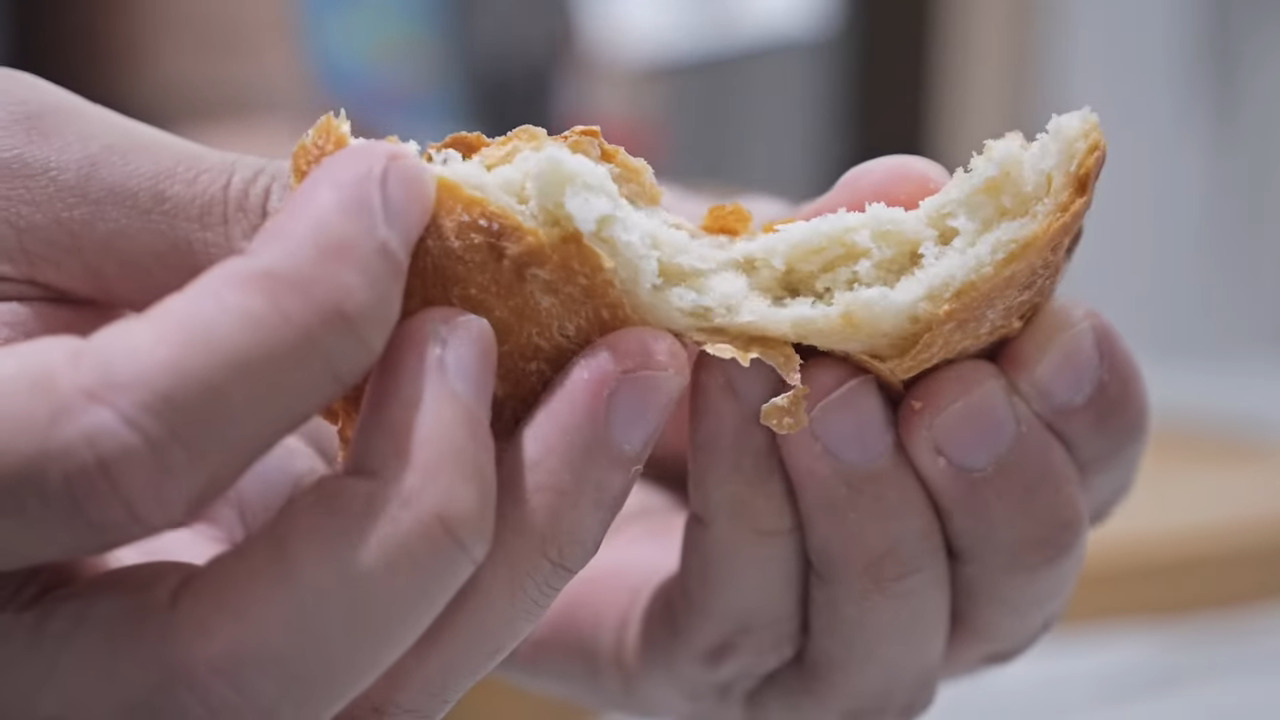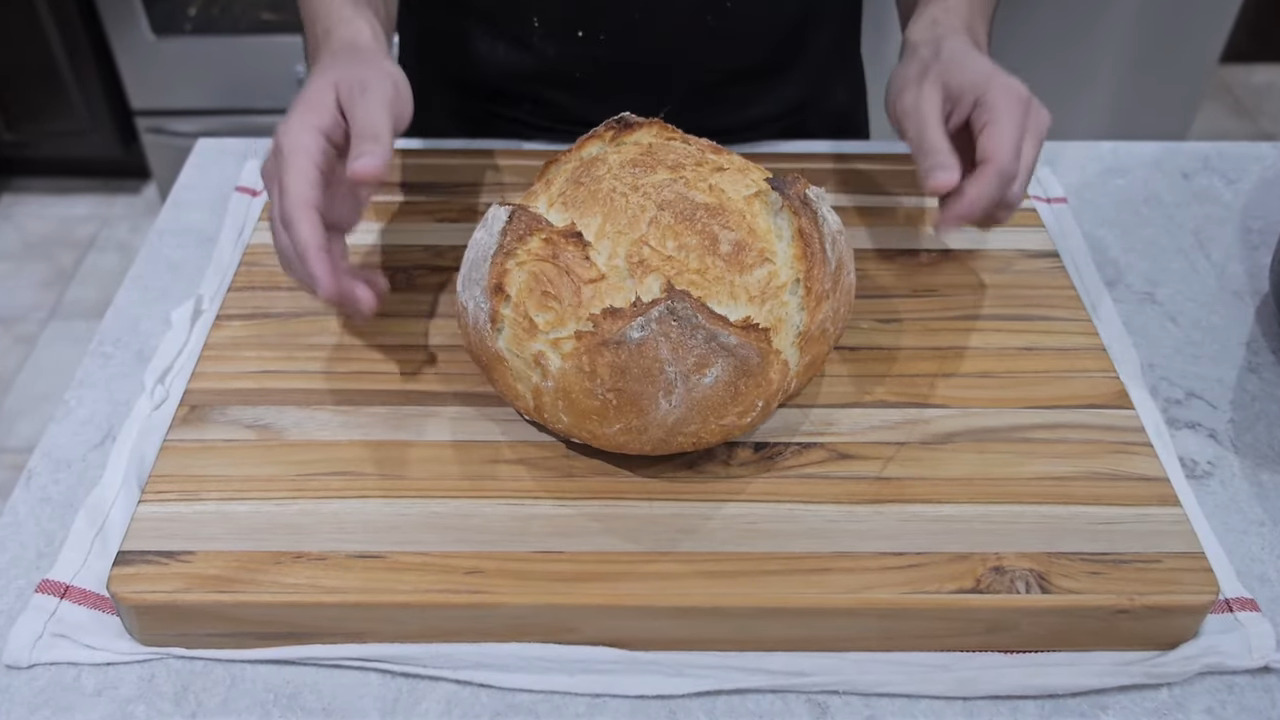Bread is one of the most universal and versatile food staples, consumed by cultures around the world for thousands of years. Whether it’s a hearty loaf of sourdough, a soft dinner roll, or a simple slice of white bread, many of us rely on bread for breakfast, lunch, or even as a snack. However, life’s fast pace sometimes leaves us looking for quicker methods to enjoy this beloved staple, and the microwave is a common choice. So, the question arises: can you microwave bread?
The short answer is YES, you can microwave bread, but the outcome depends on what you’re trying to achieve. Microwaving bread can lead to varying results depending on factors like how long you microwave it, the type of bread, and what you want from the reheating process. This article will explore what happens when you microwave bread, the pros and cons, and how to do it effectively.
What Happens When You Microwave Bread?

Microwaving bread can cause a variety of changes in texture, moisture content, and taste, which aren’t always positive. The microwave works by emitting microwave radiation that excites the water molecules inside food, causing them to heat up quickly. This rapid heating can result in undesirable consequences for bread if not handled correctly.
Here’s a breakdown of what happens to bread when microwaved:
- Dryness: Bread contains a small amount of moisture, which keeps it soft and fresh. When you microwave bread, the water molecules inside the bread heat up and may evaporate quickly. This rapid moisture loss can cause the bread to dry out, leading to a hard, tough texture. Microwaved bread can turn chewy or rubbery within minutes.
- Staleness: Microwaving can quickly stale bread. Fresh bread is soft and spongy due to its starch structure, but when heated in a microwave, the starch in the bread crystallizes much faster than in a conventional oven or toaster, leading to an unappealing texture. The bread may become tough after just a short period.
- Soggy Bottoms: If the bread contains any extra moisture (for example, if you’re microwaving a sandwich), the heat from the microwave can cause steam to build up inside the bread. This can result in a soggy, wet texture, especially if you microwave the bread for too long without allowing steam to escape.
Why Would You Want to Microwave Bread?
Despite these potential drawbacks, there are several reasons why someone might want to microwave bread:
- Speed: The microwave is a convenient kitchen appliance because it heats food very quickly. If you’re in a rush and need to warm up bread for a sandwich, toast, or snack, using the microwave may seem like an attractive option.
- Reviving Stale Bread: Microwaving can be a temporary fix for stale bread, as the heat can help to redistribute the remaining moisture and make the bread soft again, at least for a short time.
- Melting Butter or Cheese: If you want to melt butter, cheese, or another topping on your bread, microwaving can be a quick way to achieve this without using a stovetop or oven.
How to Microwave Bread Properly
If you do decide to microwave bread, there are some tips and tricks you can use to minimize the negative effects and still get satisfactory results. Here’s how to do it:
Microwaving Fresh Bread
Microwaving fresh bread isn’t recommended for long periods because it can make the bread dry or rubbery. However, if you’re just trying to warm it up for a few seconds, here’s the best approach:
- Use a Microwave-Safe Plate: Always place the bread on a microwave-safe plate.
- Cover with a Damp Paper Towel: To prevent the bread from drying out, lightly dampen a paper towel and place it over the slice. This helps to retain some of the bread’s moisture while it’s being heated.
- Microwave for a Short Time: Set the microwave on low or medium power, and heat the bread for no more than 10-15 seconds. If needed, continue to microwave in short bursts to avoid overheating.
- Monitor Closely: Check the bread after each heating interval. You want it to be warm, but not hot or rubbery.
Reviving Stale Bread
Microwaving can sometimes bring life back to slightly stale bread. This trick can work if you don’t have time to heat the bread in the oven or if you want to soften a small portion:
- Wrap in a Damp Cloth: Wrap the stale bread in a clean, damp (not wet) kitchen towel.
- Microwave in Short Intervals: Microwave the bread for 10-second intervals on medium power, checking after each interval to see if it has softened to your liking.
- Serve Immediately: Eat the bread right after microwaving, as it will harden again once it cools.
Microwaving Frozen Bread
If you’re looking to defrost frozen bread quickly, the microwave is a useful tool:
- Wrap the Bread: Similar to the previous methods, wrap the frozen bread in a damp paper towel to retain moisture during defrosting.
- Microwave on Low: Use the microwave’s defrost setting or set it to low power. Heat the bread in 10-15 second bursts, flipping it over halfway through to ensure even thawing.
- Check for Doneness: Make sure the bread is thawed all the way through but avoid over-microwaving it, as it can become chewy.
Microwaving Bread for Toast or Sandwiches
Using a microwave to heat bread for sandwiches or as a quick toast alternative might seem convenient, but it often leads to suboptimal results. Bread tends to lose its crispness and becomes chewy when microwaved for too long. However, if you want to warm a sandwich or melt cheese on toast:
- Assemble Quickly: Prepare your sandwich or toast toppings before microwaving, so you can microwave for the shortest amount of time possible.
- Use a Plate: Place the bread or sandwich on a microwave-safe plate.
- Cover Lightly: To avoid sogginess, loosely cover the sandwich with a paper towel or leave it uncovered, depending on how crispy you want it to be.
- Microwave in Bursts: Heat for 15-20 seconds at a time, checking to see if the cheese has melted or the sandwich has warmed through.
Alternatives to Microwaving Bread

While microwaving is fast and easy, there are better ways to heat or toast bread to maintain its texture and flavor. Here are some alternative methods:
Toaster
A toaster is a more suitable option for reheating or toasting slices of bread. It evenly crisps the exterior while keeping the inside soft, making it ideal for sandwiches or buttered toast. The toaster also preserves the bread’s texture better than the microwave.
Oven or Toaster Oven
If you have more time, an oven or toaster oven is an excellent option. Preheat the oven to 350°F (175°C), and place the bread directly on the rack or a baking sheet. Warm for 5-10 minutes, checking periodically to ensure it doesn’t dry out. This method provides even heating without the risk of making the bread soggy or rubbery.
Stovetop
For certain types of bread, especially flatbreads or tortillas, reheating on a stovetop skillet works wonderfully. Simply heat a dry skillet over medium heat and place the bread in the skillet, flipping it occasionally until it’s warmed and slightly crispy.
Microwaving Bread: The Verdict
In summary, you can microwave bread, but it’s not always the best option if you’re looking for optimal texture and flavor. While the microwave is convenient for quick fixes, it can easily make bread dry, rubbery, or soggy. If you’re in a hurry, microwaving bread for a short time is fine, but for the best results, consider other methods like toasting, oven baking, or stovetop reheating.
Microwaving is better suited for reheating bread with toppings, such as melting cheese on toast or softening stale bread quickly. To avoid dryness, always microwave bread with a damp cloth or paper towel, and heat it in short intervals to maintain moisture and prevent overcooking.
In most cases, a toaster or oven is a superior choice for reheating bread, as these methods preserve its crispness, texture, and taste.